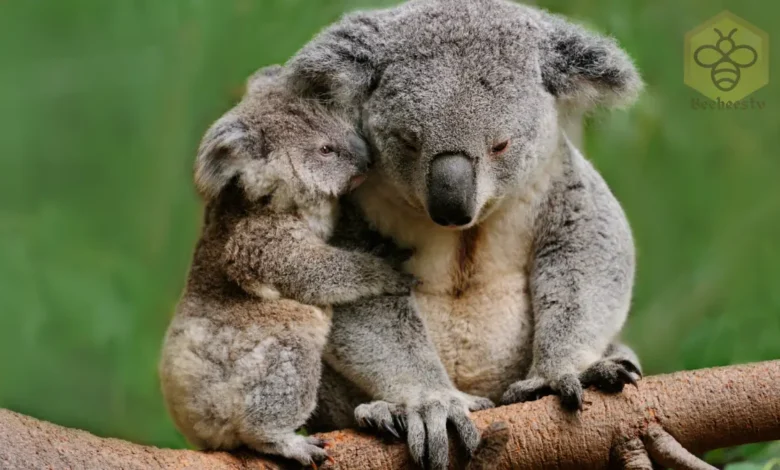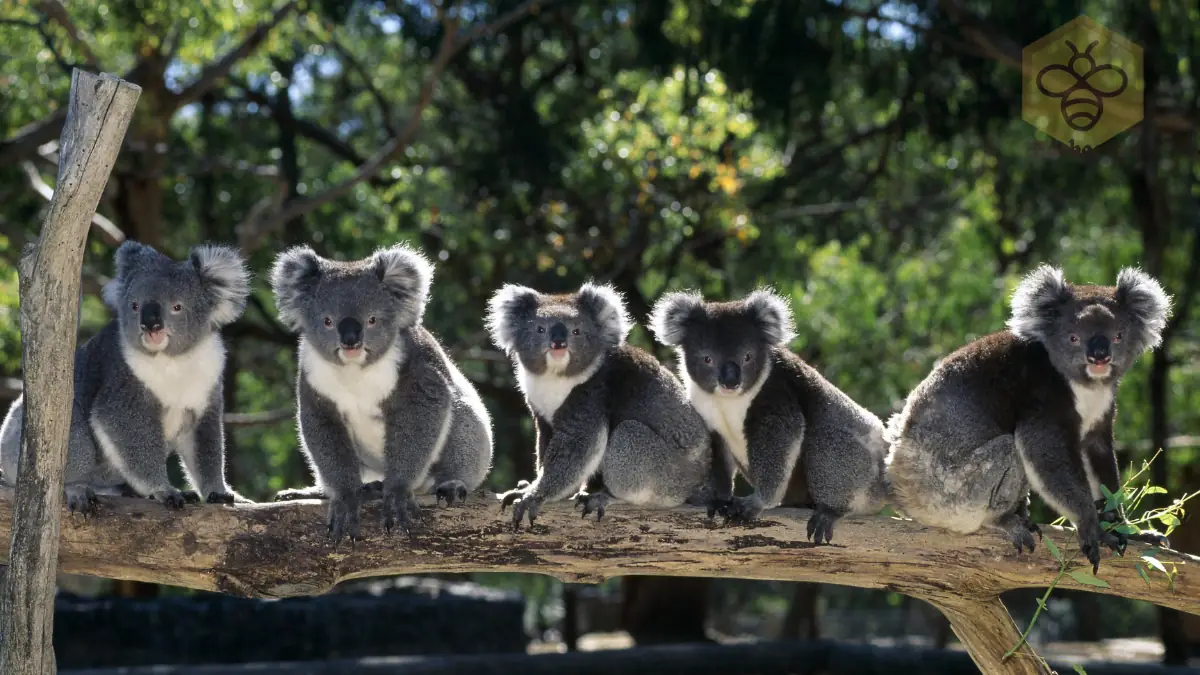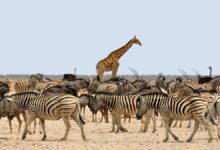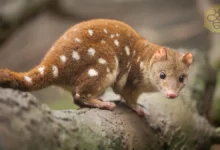Koalas: Habitat, Diet, Reproduction, Size, and more…

The Fascinating Koala: A Unique Symbol of Australia’s Wildlife
Koala
Introduction
The koala is one of Australia’s most iconic and beloved animals, recognized worldwide for its unique appearance and tree-dwelling lifestyle. Known for its fluffy ears, button-like nose, and sleepy demeanor, the koala has captured the hearts of people globally. Despite being commonly referred to as a “koala bear,” it is not a bear, but a marsupial.
Scientific Name
The scientific name of the koala is Phascolarctos cinereus.
Common Name
The common name for this species is “koala.”
Scientific Classification
| Kingdom | Animalia |
| Phylum | Chordata |
| Class | Mammalia |
| Order | Diprotodontia |
| Family | Phascolarctidae |
| Genus | Phascolarctos |
| Species | P. cinereus |
Types of Koalas
There are no subspecies of the koala, but there is some regional variation in their appearance. Koalas from the southern regions of Australia are generally larger and have thicker fur than those in the north, as an adaptation to colder climates. This variation in size and fur density is sometimes referred to as regional types, but genetically, they are the same species.
Habitat
Koalas are native to Australia and are primarily found in the eastern and southeastern parts of the country. They inhabit eucalyptus forests and woodlands, as they rely heavily on eucalyptus trees for food and shelter. They are arboreal, meaning they live in trees, spending most of their lives perched in the branches of eucalyptus trees. These environments provide koalas with both the leaves they need to eat and the safety they need from predators.
Physical Characteristics
Koalas have several distinctive physical traits that make them well-suited to their tree-dwelling lifestyle:
- Size: Koalas vary in size depending on their geographic location, with southern koalas being larger. They typically range from 60 to 85 cm (24 to 33 inches) in length and weigh between 4 to 15 kg (9 to 33 lbs).
- Fur: They have thick, soft, gray, or brown fur that helps insulate them from both the cold and heat. Their fur is denser and longer in colder southern areas.
- Hands and feet: They have strong, sharp claws and opposable thumbs that allow them to grip and climb trees efficiently. Their padded hands and feet help them maintain a firm hold on branches.
- Nose: Their large, black, leathery nose is one of their most distinguishing features and plays an essential role in helping them detect the scent of different eucalyptus leaves.
Diet
The koala’s diet is highly specialized, consisting almost entirely of eucalyptus leaves. There are over 600 species of eucalyptus trees, but koalas are highly selective and will only eat from a handful of those species. Eucalyptus leaves are low in nutrients and high in fiber, which makes them difficult to digest, but koalas have adapted to this diet through:
- A specialized digestive system: They have an unusually long cecum, a part of their intestines that helps break down the tough, fibrous leaves.
- Slow metabolism: To conserve energy, they have a slow metabolism and sleep for up to 18 to 22 hours per day.
- Water intake: They get most of their water from the eucalyptus leaves, rarely drinking water unless during extreme heat or drought conditions.

Predators and Threats
While adult koalas have few natural predators due to their arboreal lifestyle, they are vulnerable to threats both in the wild and due to human activity:
- Natural predators: Young koalas, known as joeys, are at risk from birds of prey like eagles, as well as large reptiles and dingoes. However, adult koalas face less predation due to their size and location in trees.
- Human-related threats: Habitat destruction due to deforestation and urban development is the greatest threat to koalas. As eucalyptus forests are cleared for agriculture or infrastructure, they lose their food source and shelter. Additionally, koalas are vulnerable to being hit by vehicles and attacked by domestic dogs.
- Disease: Chlamydia is a widespread disease in koala populations, causing blindness, infertility, and sometimes death.
Reproduction, Babies, and Lifespan
Koalas have a unique reproductive cycle as marsupials, characterized by giving birth to underdeveloped young that continue to grow in the mother’s pouch.
- Breeding season: They breed between September and March, which is spring and summer in Australia.
- Gestation and birth: The gestation period lasts about 35 days. After this, a single, tiny joey is born, which is about the size of a jellybean.
- Pouch life: The joey immediately crawls into its mother’s pouch, where it will stay for around six months, feeding on milk.
- Weaning: After leaving the pouch, the joey clings to its mother’s back and continues to nurse until it is weaned at around 12 months.
- Lifespan: In the wild, koalas can live for 10 to 15 years, though in captivity, they may live longer.
Population
Koala populations are declining due to habitat loss, disease, and other threats. It is estimated that there are between 80,000 and 100,000 koalas left in the wild, but exact numbers are difficult to determine because populations are scattered and fragmented across different regions. Conservation efforts are underway to protect their habitats and preserve the species.
Behavior and Lifestyle
Koalas are solitary animals and spend most of their time resting or sleeping in trees. Their slow metabolism means they require long periods of rest to digest their food properly. They are primarily nocturnal, meaning they are most active at night when they forage for eucalyptus leaves.
- Social behavior: While koalas are generally solitary, they do have overlapping home ranges. Males tend to be more territorial, using scent markings and vocalizations to establish dominance.
- Communication: They communicate with deep bellows and other vocalizations, particularly during the breeding season.
- Territoriality: Male koalas are more territorial and may engage in aggressive behavior to defend their range.
Ecological Role
Koalas play an essential role in their ecosystem by helping to control the growth of eucalyptus trees. By selectively feeding on specific trees, they prevent overgrowth, which allows sunlight to reach other plant species. In turn, this contributes to maintaining a balanced ecosystem.

FAQs About Koalas
- Are koala bears?
No, koala are marsupials, not bears. The term “koala bear” is a misnomer. - Do koalas drink water?
They get most of their water from the moisture in eucalyptus leaves, but they will drink water if necessary during extreme heat or drought. - Why do koalas sleep so much?
They have a low-energy diet, consisting of fibrous eucalyptus leaves. They sleep for up to 18-22 hours a day to conserve energy and digest their food. - Where do koalas live?
They live in eucalyptus forests and woodlands in eastern and southeastern Australia. - Are koalas endangered?
They are not currently classified as endangered, but they are considered vulnerable, with declining populations due to habitat destruction, disease, and climate change.
Conclusion
The koala is a unique and fascinating marsupial that plays a vital role in Australia’s ecosystems. While koalas are beloved worldwide, they face numerous threats, including habitat destruction, disease, and climate change. Conservation efforts are crucial to ensuring the survival of this iconic species. As a symbol of Australia’s rich biodiversity, the protection of koalas and their habitat is essential for future generations to continue enjoying these remarkable animals.


